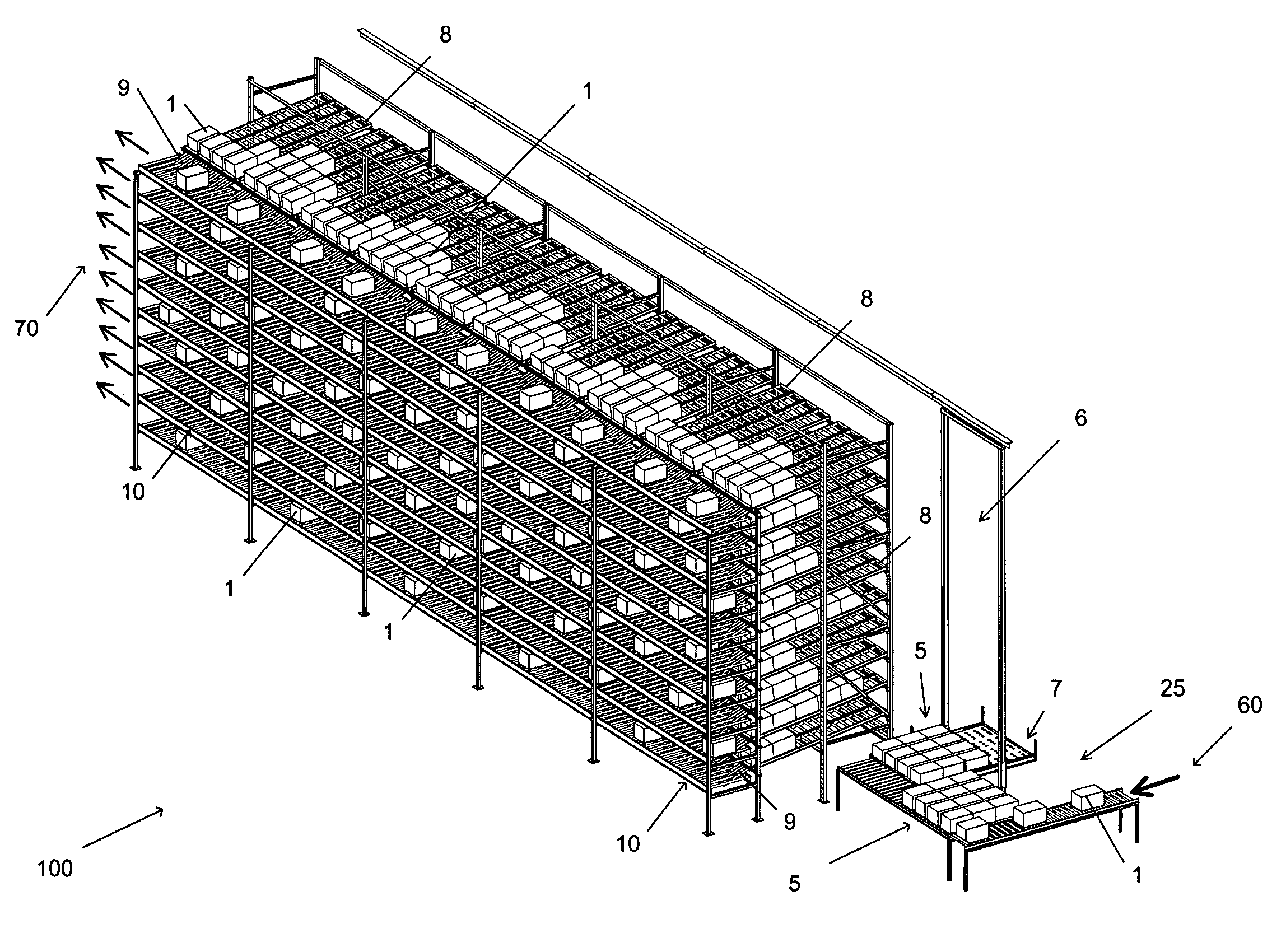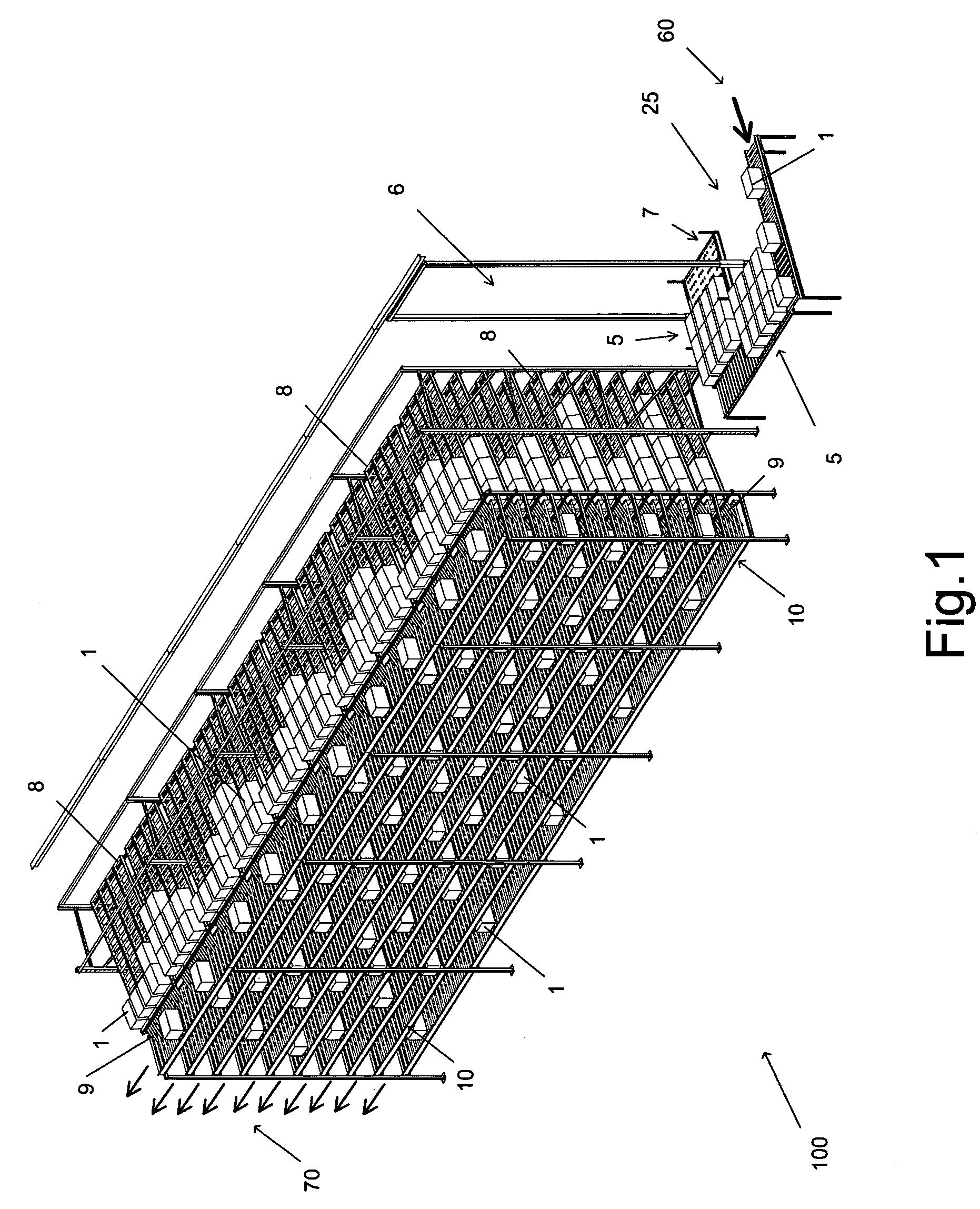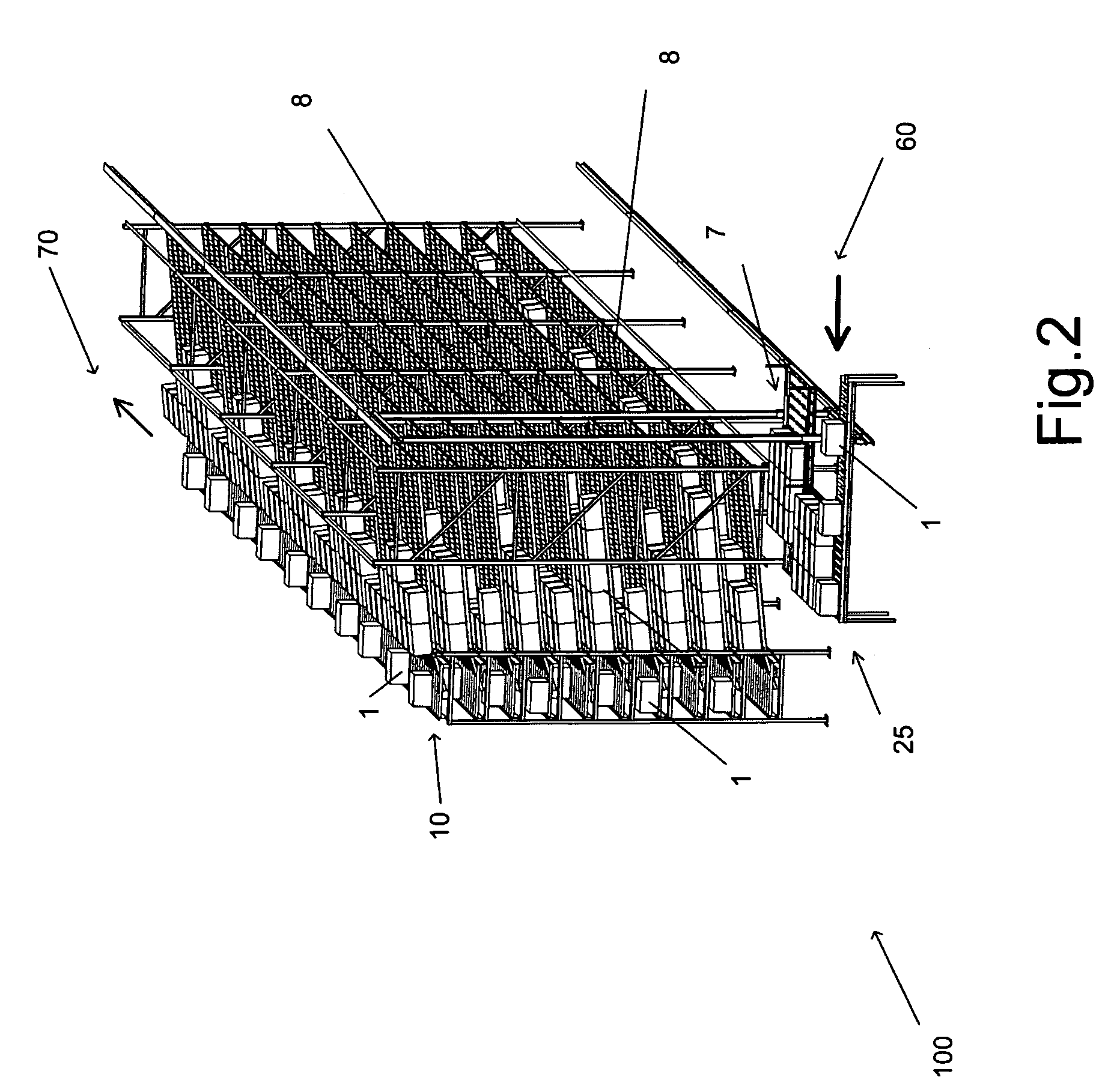Automated order sequencing method and system
a technology of automatic order and sequencing method, applied in the direction of control devices of conveyors, conveyor parts, stacking articles, etc., can solve the problems of low productivity, difficulty in finding or retaining labor, and high cost of manual picking errors, and achieve the effect of reliable product movement, not cost effective, and cost effectiv
- Summary
- Abstract
- Description
- Claims
- Application Information
AI Technical Summary
Benefits of technology
Problems solved by technology
Method used
Image
Examples
first embodiment
[0096]FIGS. 1 to 4 describe the system.
[0097]FIG. 1 is an overall perspective view of the first embodiment 100 of the system from the input 60 of depalletized cases 1 to the output 70 of sequenced cases 1. This shows the formation of a handling unit 5, the crane 6 being loaded, the array of case guides 8 and removal apparatuses 9, and the sequencing conveyors 10.
embodiment 100
[0098]In FIG. 2, the system embodiment 100 is shown from the input side of the array of case guides 8.
[0099]Cases 1 of one product type are delivered by a conventional warehouse storage, pallet handling, case depalletizing and case conveyor system (not shown) to the input conveyor 60 of the handling unit formation area 25.
[0100]The cases 1 of one product type are then grouped into linear groupings 4 of three cases; four linear groupings 4 of one product type are then assembled into a handling unit 5.
[0101]One skilled in the art will recognize that the quantities of cases per linear grouping and the quantity of cases per handling unit can change without deviating from the scope of the present invention.
[0102]The handling unit is transferred onto a crane 6 which is equipped with an attachment 7 that can load handling units unto itself.
[0103]The crane 6 then transports the handling unit 5 to a structure containing an array of case guides 8.
[0104]The crane attachment 7 loads the entire ...
second embodiment
[0118]FIGS. 5 to 8 describe the system.
PUM
 Login to View More
Login to View More Abstract
Description
Claims
Application Information
 Login to View More
Login to View More - R&D
- Intellectual Property
- Life Sciences
- Materials
- Tech Scout
- Unparalleled Data Quality
- Higher Quality Content
- 60% Fewer Hallucinations
Browse by: Latest US Patents, China's latest patents, Technical Efficacy Thesaurus, Application Domain, Technology Topic, Popular Technical Reports.
© 2025 PatSnap. All rights reserved.Legal|Privacy policy|Modern Slavery Act Transparency Statement|Sitemap|About US| Contact US: help@patsnap.com



